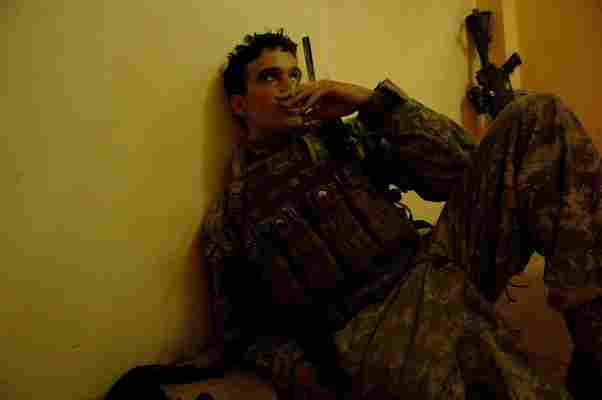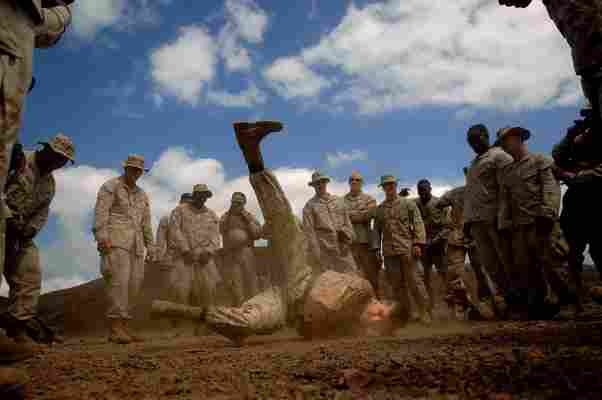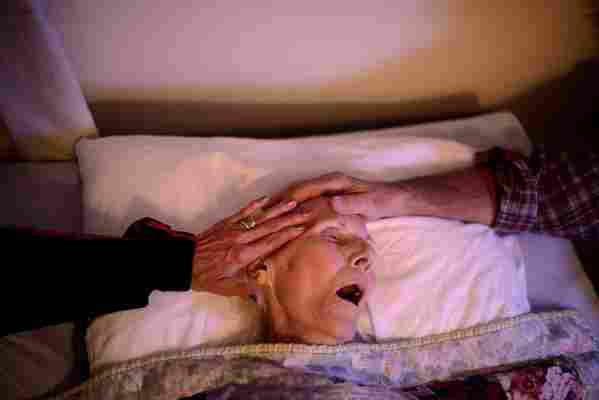While the United States military has been in Afghanistan and Iraq for the better part of nearly two decades, photographer Jeremy Lock’s military career started just a decade earlier, before 9/11, in 1992 when he enlisted in the Air Force. Lock comes from a long line of family members in the military. His grandfather served in World War II for the Army, and his father served as an aeronautical engineer and lieutenant colonel in the Air Force.
After a short stint in college in which he did not graduate and working on construction sites, Lock joined the Air Force, initially wanting to be an x-ray technician. However, the Air Force saw greater potential in him and wanted him to take another job assignment. Instead, he was assigned to work in a dark room.
"I was the guy that would be in the darkroom processing and printing U-2 spy plane footage and the satellite imagery that we have," he says. Developing these images would be Lock's first exposure to photography.
"The images that I was processing and printing, the president was seeing, special forces were seeing, battlefield commanders were seeing, and even the Pentagon. It was all that kind of stuff that they were making their daily decisions off of. . . . there was a big sense of self-pride in doing this kind of work."
Despite that, Lock had aspirations beyond processing the film. He wanted to be making images himself. Soon enough, he was a combat photographer, documenting the wars on joint services operations in Afghanistan and Iraq, where he was awarded the Bronze Star for distinguished service. He captured the realities of military humanitarian operations in Japan after the 2011 tsunami and the earthquake in Haiti in 2010. Along the way, Lock honed his craft, learning from mentors, and he went on to be named Military Photographer of the Year seven times by the Defense Department.
After he retired from the military in 2013, Lock continued to photograph around the world. His work has now appeared in National Geographic , The New York Times , The Washington Post and elsewhere.
The following photographs are not only a personal record of Lock's career but also proof of how connected the world is. I was able to catch up with Lock to talk about civilian and military life, and photography.
After getting out of the dark room, what was your first boots-on-the-ground introduction to war?
In Iraq, we were doing a mission where we were exploring some underground bunkers. And as we're coming back, you just hear this crack, whiz, whiz, whiz, crack, crack. Immediately I ducked down. There were bullets flying by our heads, smacking the trees behind us.
I remember ducking down and the gunner in the back of my Humvee just start going kak, kak, kak, kak, kak, kak, kak, kak, firing. I remember just looking up at him. I was impressed, like, "Wow, look. His training just kicked in." My eyes were big. I'm thinking, "I'm here. I'm in this. I'm doing this for the right reasons. This is it.” I was like, "Oh, s**t. I need to be taking pictures of this." I pulled my camera up to do it, and it was already over.
What do you look for when you’re out on a shoot?
I always try to look—whether it's shooting war, earthquakes, tsunamis, or recently Hurricane Florence—for the good in people and the good in what's happening. Yes, you've got to show that bad stuff to put it in perspective, but it's the good stuff that shows really who we are as humans.
While shooting photography in the military, what did you believe was your mission?
The greatest honor that I've ever had in my entire life is to be able to show the brave men and women who are over there defending our freedom. It’s not only for historical purposes, it’s for the battlefield commanders to know what's going on. But man, it's so nice for their hometown mom and dad to see and be proud of what their children are doing for our country. I mean it's that sense of pride. I mean the greatest honor that I've ever had was to document that.

Presently, you're out of the service. Are you serving a different purpose now? Is there anything you've taken from your military experience that you're applying today in your civilian career?
I went to an old Combat Camera Squadron reunion , and these old guys were there. One of them said, "You know, if you think about it, battle on a battlefield is little puffs of smoke off in the distance. You're not fighting hand-to-hand. You're not two feet away from a person or 10 yards from a person. It's little puffs of smoke off in the distance." I'm sitting there going, "Yeah, that's very true. It's hard to capture that." He goes, "If you really want to capture war, if you think about it, if you really want to capture war, you capture it on the soldier's face next to you." That has stuck with me to this day.
In my Twenty-One series , there's this guy smoking. I mean you can just see it in his face. He's just drained. It's a long, hot day. It's the first time we've come to sit down and can take a break in a safe place, a police station. He just pulls out a cigarette and starts smoking. It's just that moment of, "Okay. It's another day. I'm alive." It doesn't matter if I'm shooting the pet of the week or a veterans' organization here. It's really paying attention to these people's faces. It's capturing it in the eyes.
What about the photo of the service men breakdancing? What does that photo mean to you?
That's what my brotherhood is. We don't sit there, at least I don't sit there, and judge people by their skin and color. You're my brother. You're my sister. We're in this together. I got your back. You have mine.

As you see it, how could other civilians honor veterans for their service?
For somebody just to genuinely and honestly shake your hand and say, "Thanks for your service," is the biggest thing. I'm a civilian now, and I'll see guys in uniform or know that somebody's a vet. I don't even say I'm a vet. I just walk up and I'll shake their hand and say, "Thanks for your service." They don't need to know anything about me. The greatest ever is just for somebody to look you in the eyes and mean it.
Again, what's the break dancing photo for? To show these people that take our freedom for granted, to show them it's kids out there. It's kids that are out there protecting our freedom. Just a simple thank you goes so far in my book, a genuine thank you.
Throughout your career, what has been the most difficult photo to shoot?
My grandmother’s last breaths, to me, it's the hardest photograph I've ever had to take in my life. I've been through death and destruction. That camera kind of acts as that barrier. But when it's your own flesh and blood, it was a little bit different, and seriously fighting back tears, and listening to my parents say, "You've lived a good life. You've lived a good life. It's time to go. It's okay to go." Just watching my interaction with my parents. It’s just such a reminder that there is beauty even in death. To me, it's very angelic. It's powerful, and it's a great way to give tribute to a beautiful woman that helped raise me. I was very blessed to be there.
Looking holistically at your work, what do you see?
Ultimately, it's me just playing and having fun. I'm literally so blessed that I got to live an Indian sadhu's life for a little bit. I got to capture those soldiers' lives. I got to capture life unfolding right in front of me. Whatever I'm doing, I'm so blessed because not only do I get to live my life, but I get to live the lives of the people that I document. Honestly, any time I pick up that camera I'm playing. I know in the back of my head what I'm doing is serious and I want my work out there to be seen and make that difference, but man, I just feel like I'm playing.
When you come home and you look at those images, as you're scrolling through your shoots and all of a sudden there's that magical break dancing one that you just love or the guy's running through the desert and it worked, the hair stands up on my arms and I just get so excited. It's like you're a kid in a candy store.
Do you have a photo of a kid in a candy store?
No. It would be me. I'm blessed because I get to be there. I get to witness history. I get to witness these people's lives. I'm proud of it.

Jeremy Lock is a retired United States Air Force Master Sergeant Combat Photojournalist. As a civilian photographer, he continues to capture moments around the world and works with numerous veterans organizations. Most recently, Lock was the recipient of the first annual South x Southeast Directors Award for his project To Be an Apatani Woman . This Veteran's Day weekend, Jeremy Lock is taking over the Smithsonian magazine Instagram account .
